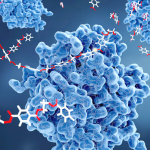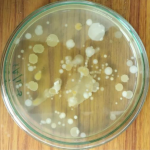ETG vs Enzyme, Microbe, and Effective Microorganisms
🔬 Enzyme

- Definition: Enzymes are biological catalysts—proteins produced by living organisms (like microbes)—that speed up chemical reactions.
- Function: Breaks down specific molecules. For example, lipase breaks down fats, protease breaks down proteins.
- Limitation: Enzymes only work on specific substrates and do not reproduce or grow. They are non-living.
🧪 Example: Pouring an enzyme product into a grease trap may break down the grease, but the enzyme itself doesn’t grow or clean further once used up.
🦠 Microbe (Microorganism)

- Definition: Living organisms (e.g., bacteria, fungi) that can grow, reproduce, and perform functions like producing enzymes or breaking down waste.
- Function: Microbes often produce their own enzymes to digest waste over time.
- Benefit: Microbes can adapt, multiply, and provide long-term effects.
🧪 Example: A microbial solution keeps working as the bacteria colonize and continue digesting organic matter like grease or sludge.
🌱 EM (Effective Microorganisms)

- Definition: A specific cocktail of beneficial microbes, often including lactic acid bacteria, yeast, and photosynthetic bacteria.
- Origin: Concept introduced by Prof. Teruo Higa in Japan.
- Use: Widely used in agriculture, wastewater treatment, composting, and odor control.
🧪 Example: EM solutions are applied to reduce smell and improve breakdown in organic waste like food compost or septic tanks.
🌟 ETG

Let’s define ETG clearly, assuming based on past conversations it’s a custom formulation of microbes + enzymes optimized for industrial or domestic cleaning.
- Definition: ETG is a proprietary blend of enzymes and living microbes (possibly including EM types) tailored for targeted applications like:
- Grease traps
- Odor control
- Wastewater
- Piping maintenance
- Advantage:
- Combines immediate action of enzymes with the long-term breakdown of waste by microbes.
- Safe, non-toxic, and biodegradable.
- Can outperform standard enzymes-only or microbes-only products.
- Tailored for local industry problems (e.g., tropical climates, FOG issues in palm oil, hotels, restaurants).
🧩 Summary Table
| Feature | Enzyme | Microbe | EM | ETG |
|---|---|---|---|---|
| Living organism? | ❌ No | ✅ Yes | ✅ Yes | ✅ Yes (microbes + enzymes) |
| Reproduces? | ❌ No | ✅ Yes | ✅ Yes | ✅ Yes |
| Acts fast? | ✅ Yes | ⚠️ Slower | ⚠️ Slower | ✅ Yes (enzymes) |
| Long-lasting effect? | ❌ No | ✅ Yes | ✅ Yes | ✅ Yes |
| Custom blended? | ❌ No | ❌ Generic | ⚠️ Predefined | ✅ Yes (tailored formula) |
| Application-specific? | ⚠️ Sometimes | ⚠️ Sometimes | ⚠️ General use | ✅ Targeted by industry |

